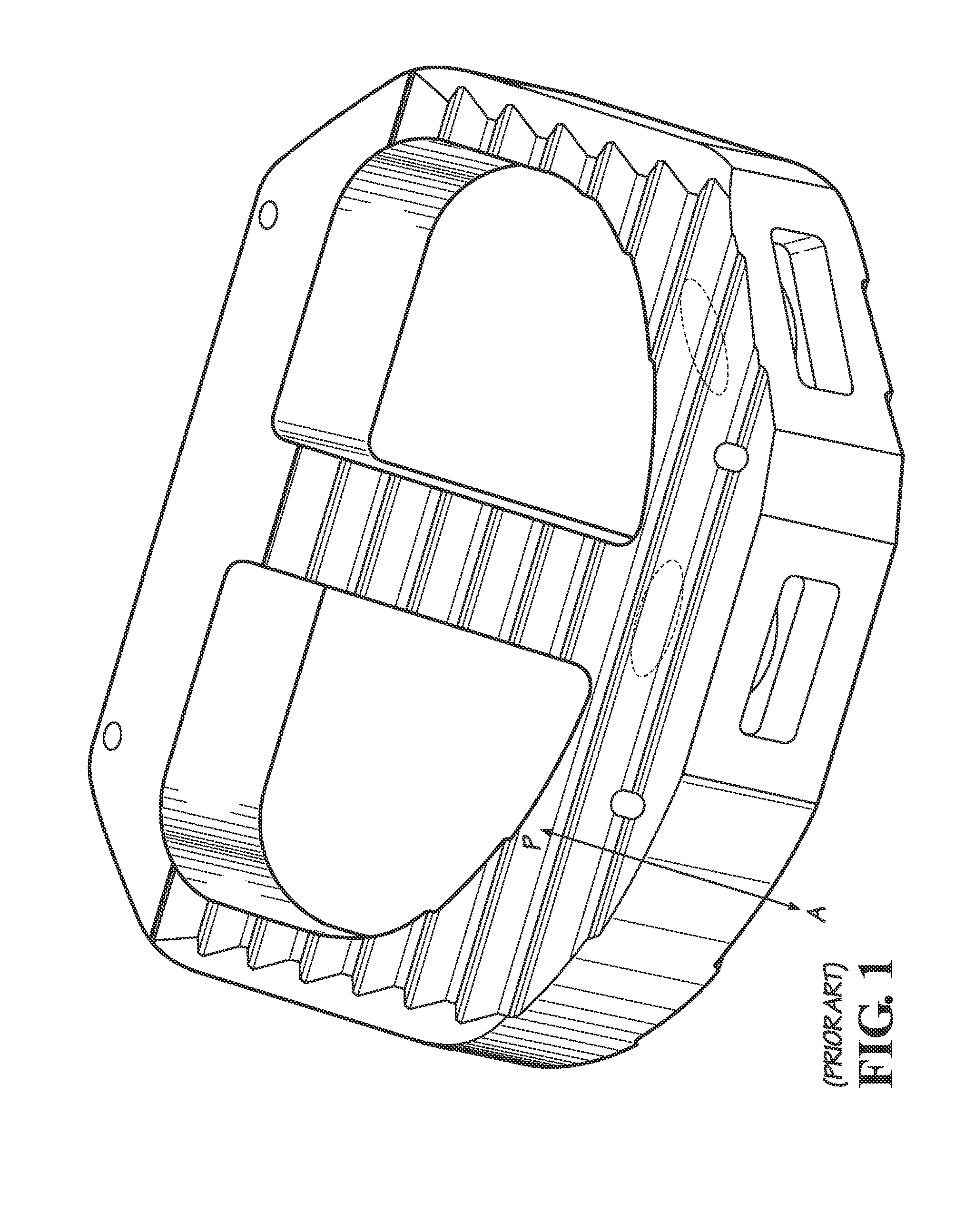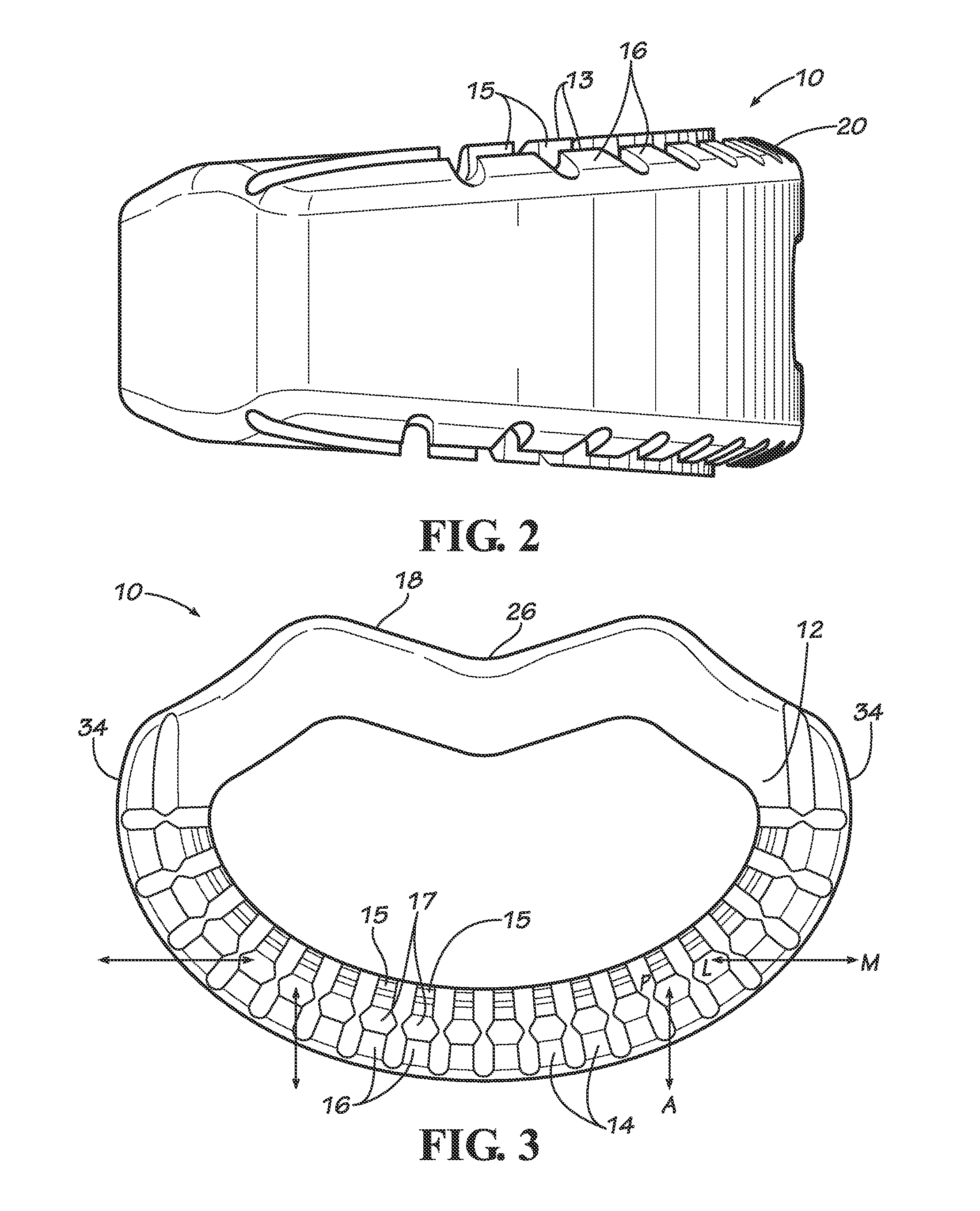Spinal implants
a technology for surgical implants and implants, applied in the field of surgical implants, can solve the problems of pain in the back and radicular muscles, pain in the nerve roots, bone growth, etc., and achieve the effect of enhancing the performance and stability of surgical implants and improving the contact of implants
- Summary
- Abstract
- Description
- Claims
- Application Information
AI Technical Summary
Benefits of technology
Problems solved by technology
Method used
Image
Examples
Embodiment Construction
[0031]Disclosed are interbody implant systems comprising implants with unique profiles and / or other features that help prevent movement and migration of the implants once the implants have been placed in the interbody disc space. The interbody implants are useful for implants of any size or style, but are particularly useful for implants of larger size that may be used in procedures such as ALIF or XLIF. The disclosed implants may also be used in other procedures, such as TLIF and PLIF. The interbody implants may be made of titanium, carbon fiber, allograft, or other suitable material including, but not limited to, biocompatible materials such as the Paek family of polymers. Those of ordinary skill in the art will readily appreciate other materials of which the implants may be composed.
[0032]As described in detail below, features of the disclosed implants maximize stability of the implant under various anatomical conditions. In some embodiments, the implant includes surface contours...
PUM
 Login to View More
Login to View More Abstract
Description
Claims
Application Information
 Login to View More
Login to View More - R&D
- Intellectual Property
- Life Sciences
- Materials
- Tech Scout
- Unparalleled Data Quality
- Higher Quality Content
- 60% Fewer Hallucinations
Browse by: Latest US Patents, China's latest patents, Technical Efficacy Thesaurus, Application Domain, Technology Topic, Popular Technical Reports.
© 2025 PatSnap. All rights reserved.Legal|Privacy policy|Modern Slavery Act Transparency Statement|Sitemap|About US| Contact US: help@patsnap.com



